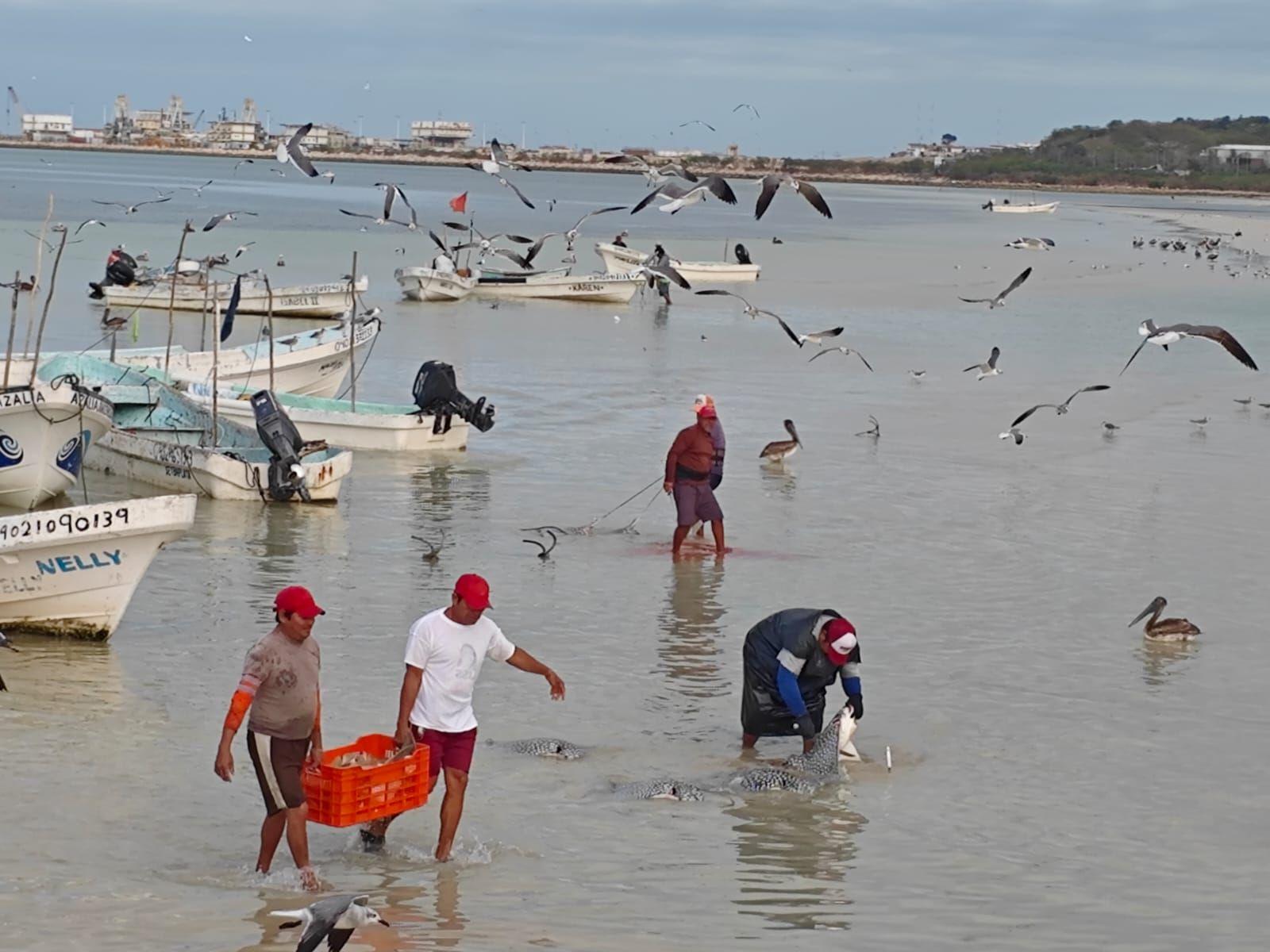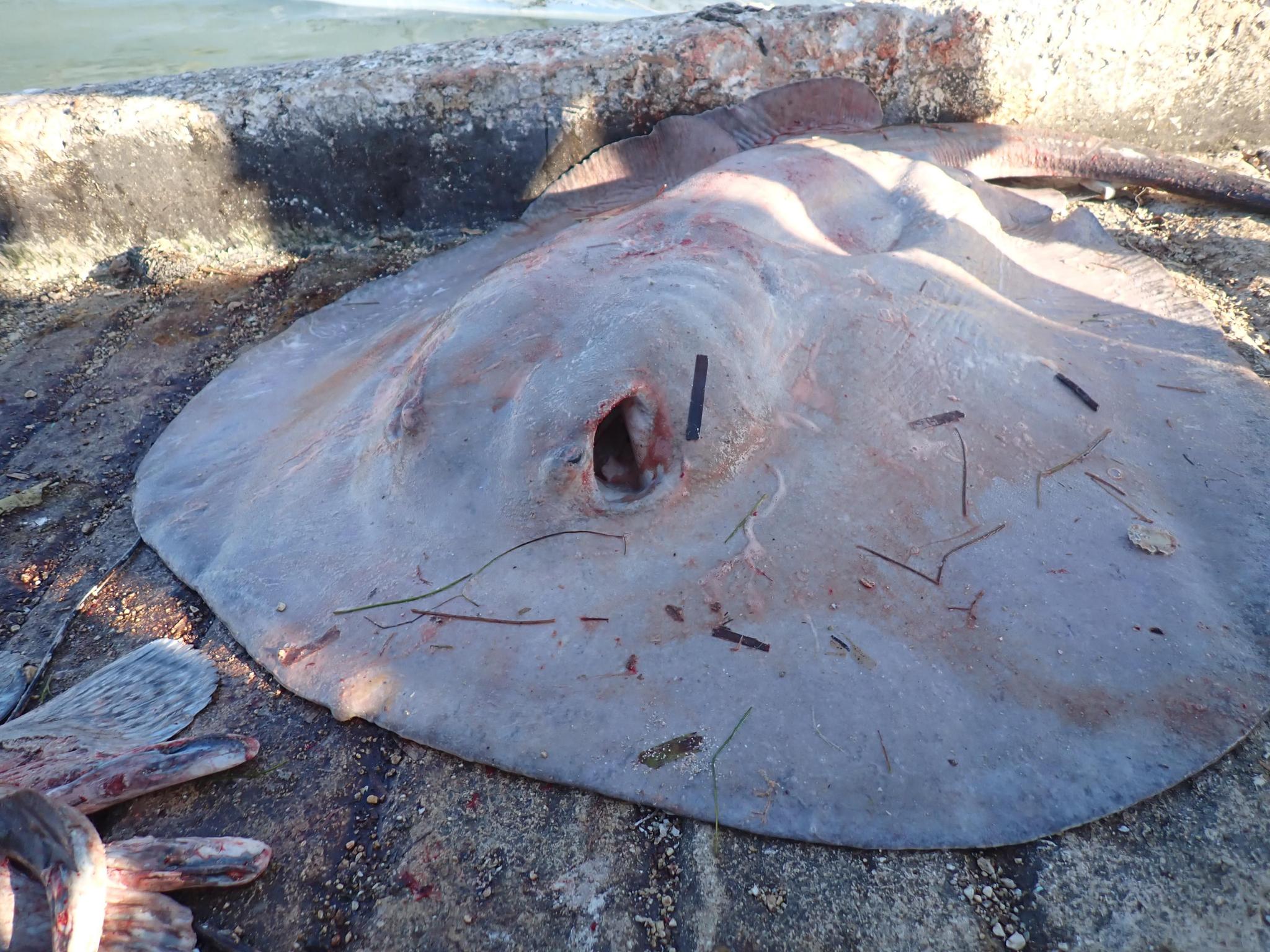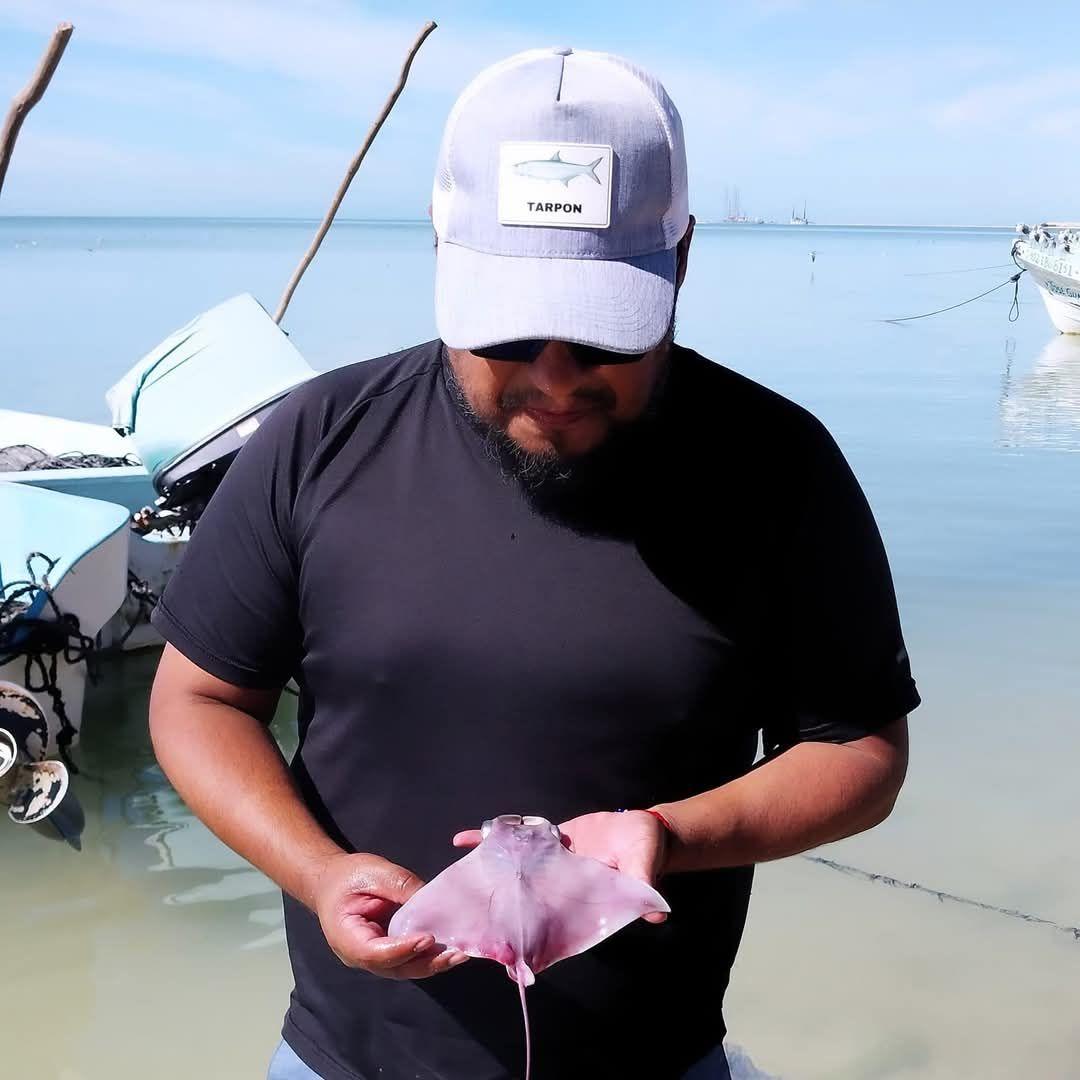For years, Seybaplaya lived on intensive shark fishing. But today the fishermen of this Campeche community are focusing their efforts on catching 'balá' (Hypanus americanus), also known as whip rays. Aware of how overexploitation ended the shark, they work hard to keep from making the same mistakes that closed economic doors to them in the past.
The fishing conditions agreed upon by the local fishermen are apparently simple: do not fish for rays smaller than one meter in length and only catch males.

The fishermen of Seybaplaya feed the community with stingray fishing. Source: Yassir Torres.
Lázaro Ramos Chan, a resident of Seybaplaya, started fishing at the age of 13. He had to watch when the whole town revolved around shark fishing, until it was over.
“The man with whom I started fishing 'balá' is already big, he is now 70 years old, he used to fish for sharks and then he dedicated himself to stingray fishing because the shark ran out. I experienced that transition from shark fishing to fishing now stingray,” Lazaro recalled.
Until two decades ago, shark fishing was profitable. Later, the efforts focused on the octopus, but for four years the fisherman stated that they no longer see specimens of the mollusk in this area. Thus, “balá” became a cost-effective option and closely linked to community food.
'Balá' derives from Maya and refers to the movement with which the stripe is buried in the sand.
Felipe Gómez, a Seybaplaya fisherman, explained that this species can be caught almost all year round, except from May 15 to June 15 and a second period from August 1 to 29 for the closed period.
Despite having 10 months to fish, the community imposes itself on shifts so that the fishery does not suffer the fishing impact of the entire fleet.
“It's a species that we fish almost all year round, but we don't do it in a massive way either, but to eat with our families and for sale very locally because we already had experience with sharks,” he said.
On average, anglers gain about 50 kilos per day, a quota that does not weigh the quantity, but the sustainable approach.
Lázaro explained that both the young and the females are returned to the sea, especially if they are pregnant.
“We don't catch the little ones. If we find one, we return small 'balaitos' to the sea because we understand that they still need to reproduce. We respect females equally and much more when they are pregnant. We try to take care of them. We don't want to run out of it too,” he said.

Lázaro is one of the main drivers of sustainable fishing in the community. Source: Itzel Chan.
While in other areas of Campeche not all fishermen respect these measures, in Seybaplaya there is a collective commitment to take care of the resource so that it does not run out, which is why Lázaro described that the fish is not delivered to wineries and together they decide to stay in the community, where they sell 'balá' for 100 pesos per kilo.
Don Mario Martínez, a local restaurateur, confirmed that 'balá' is essential in the town's cuisine and is a food that they eat on a permanent basis.
“Here people eat them fried or toasted, they accompany them with beans and rice and that way they already have their week's worth of food,” he said.

Seybaplaya is a small fishing port in Campeche. Source: Itzel Chan.
For a long time, catching stingrays was an activity without clear regulation in Mexico, without quotas or minimum sizes. Specialists point out that it was often done as an extension of shark fishing.
In 2018, federal authorities updated a Fisheries Standard in 2006 to regulate shark and ray fisheries; and in 2022, a new comprehensive Fisheries Management Plan for sharks and rays in the Gulf of Mexico and the Caribbean was published , since the first was made 11 years ago.
This fishery is still young and if you work on time to regulate its fishing it can be long-term, said Yassir Torres Rojas, a researcher at the Autonomous University of Campeche.
“In the Gulf of Mexico, in particular, stingray fishing came in as a buffer against shark fishing, which began to come under pressure a few years ago. So nowadays they are the help of sharks in economic and social functions,” he explained.
From their perspective, the situation of stingrays is reminiscent of what sharks faced three decades ago because it is a growing activity, with little biological and ecological knowledge. 
Striped fishing was relatively recently included in the Statistical Yearbooks. Source: Yassir Torres.
One of the main challenges observed by the specialist in this fishery is the weakness of the ban, which only covers two months and groups rays into the general category of sharks, when in themselves they should be classified in a separate group.
Veracruz, Tabasco and Campeche are the main states where this species is caught. In view of this, Torres Rojas proposes conservation strategies based on local participation.
“We understand that they will not stop eating 'balá', for example; but perhaps we will let them know that the species should not be overexploited. In Seybaplaya, until now, the fishing they do is sustainable because they catch only adult specimens and do not fish for females,” he described.
A complementary strategy for the conservation of 'Bala' is the protection of critical habitats. Areas such as the Alacranes Reef National Park or biosphere reserves in the Caribbean, such as Banco Chinchorro, offer shelters where whip rays thrive without being caught.

In the community, they release the young and the females. Source: Itzel Chan.
Stripes are not yet considered an overexploited species, but this is due to the lack of historical data and records, not because that is precisely the reality, said Alejandra González Mata, a marine biologist.
“The advantage it has is that for now it is not a species that is exported to other countries, but rather that fishing communities capture it for local consumption. The most you find in local restaurants are 'balá' empanadas, but it's mostly for household consumption,” he said.

In Seybaplaya, the main activity is low-scale fishing. Source: Itzel Chan.
For now, only the eagle ray (Aetobatus narinari) is classified as an endangered species on the Red List of the International Union for Conservation of Nature (IUCN). On the other hand, the 'balá' line does not yet appear in any threat category.
Even so, specialists agree that it is time to pay attention to their domestic use and the potential impact of their bycatch.
“We must pay attention to the role of local consumption and their domestic use in the regions because what is not much known is about the incidental fishing that this species has in other fisheries,” González emphasized.
* This article was written by Itzel Chan, who covers coastal communities thanks to the support of the Report for the World program .




Comentarios (0)